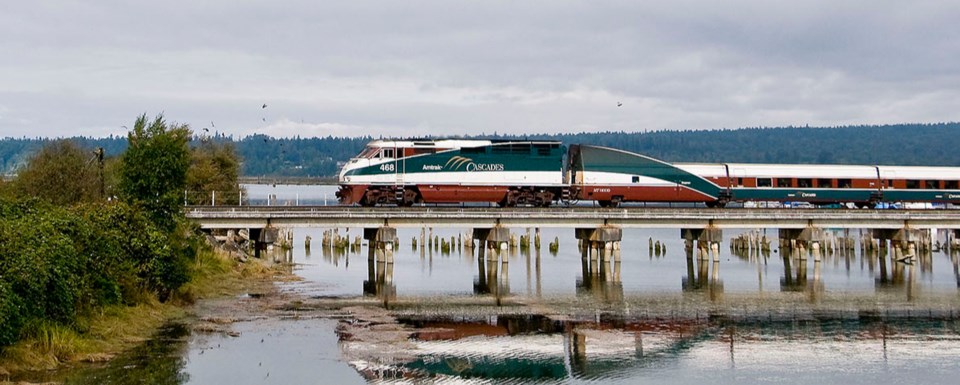The province is ponying up $300,000 to get the next phase moving on a proposed high-speed rail line that would link Vancouver to Seattle and Portland.
The move comes as business leaders across the Cascadia region in Blaine, Wash.
Funding will go towards the next phase of the rail line’s feasibility study, which is being led by Washington state’s Department of Transportation.
The study aims to hash out future funding requirements, develop a public engagement strategy, figure out how to integrate the proposed rail line with regional transportation and develop plans for environmental review processes.
The $300,000 sum from B.C. comes after Washington state legislators earmarked US$150 million in March to help ramp up the development of the high-speed rail line.
Meanwhile, Washington is contributing US$4 million towards this next phase of the study that the province is supporting.
“We have to recognize the fact that a project of this magnitude will not happen without public-private partnerships. Either side solely shouldering the responsibility will fail,” Mark L. Riker, executive secretary of the Washington State Building and Construction Trades Council, said Monday during a panel at the CIC conference.
A report commissioned by the CIC and released on Monday is urging stakeholders throughout the region to support the high-speed rail initiative.
"Increased economic activity, job creation and greenhouse gas reductions are some of the many benefits of a high-speed rail connection along the Pacific Northwest,” Rick Glumac, the B.C. premier’s liaison for Washington state, said in a statement.
Previous phases of the high-speed rail study estimated the project would facilitate between 1.7 million and 3.1 million one-way trips annually by 2040, with the Vancouver to Seattle route accounting for between 425,000 and 775,000 of those trips (about 25 per cent). The rail line also has the potential to reduce greenhouse gas emissions by as much as six million tonnes during the first 40 years of operations, according to estimates.
The project is right now estimated to ring in at $42 billion, although previous phases of the study concluded that revenue would cover those costs by 2055.

